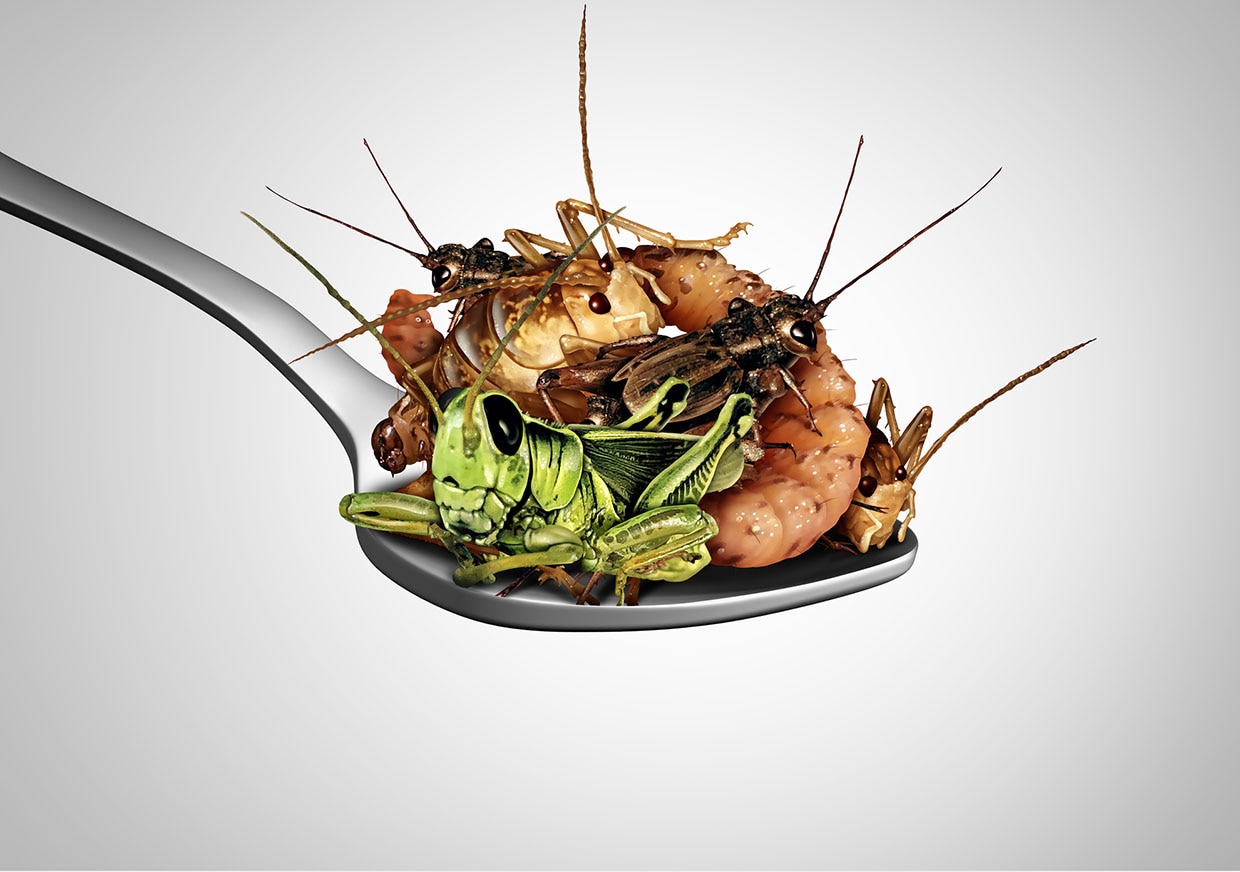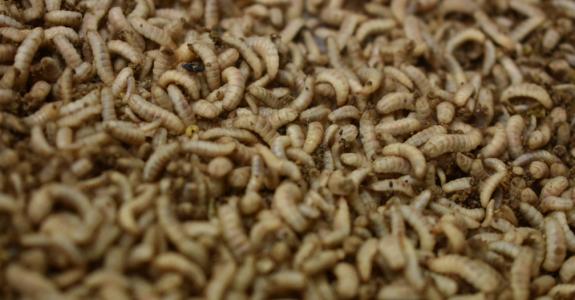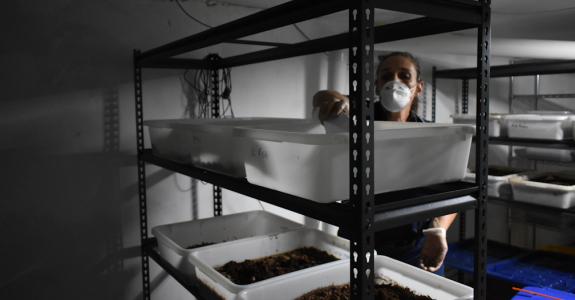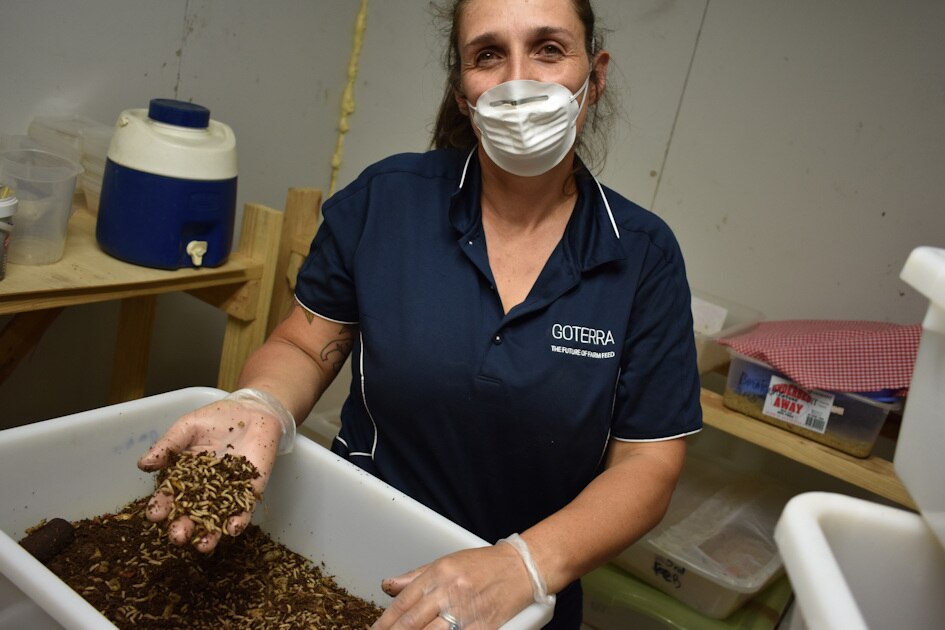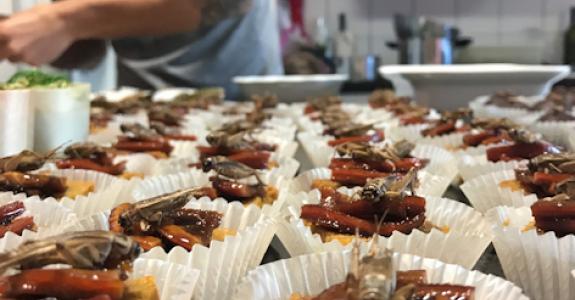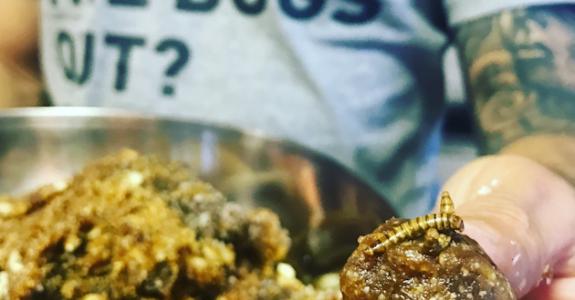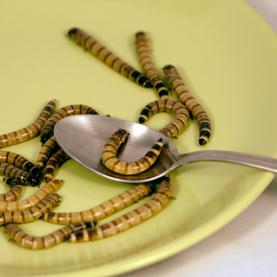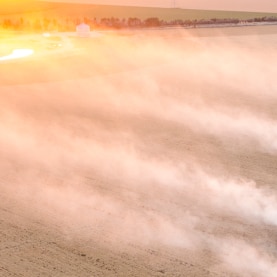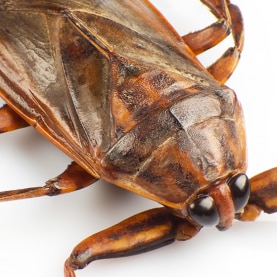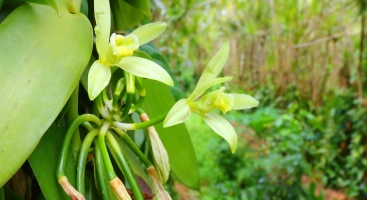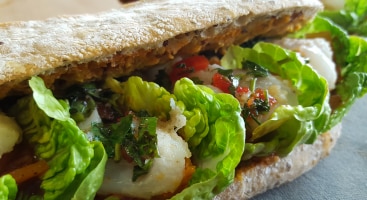Edible insects: Protein for the future?
Olympia Yarger is a cutting edge Australian insect farmer on a mission
Mealworm falafels. ©Goterra
Over two billion people eat insects as part of their traditional diet,1 meanwhile Western cultures have long forgotten about this nutritious and, YES, flavourful source of food.
Olympia Yarger is an Australian insect farmer determined to change this narrative. She is the founder and managing director of Goterra, one of just seven Insect-for-Food farmers in the country. It is no backyard operation either – Olympia has developed a fully automated farming system that produces over 250 kg of mealworms each month.
Her mealworms are farmed in shallow boxes that are stacked neatly into shelving units in a dark warm shed. A large robotic arm monitors their conditions and dispenses their food, although they are still checked daily by a small team of farmers.
At six weeks the mealworms are at their peak development stage and it is time to harvest. Carbon dioxide (dry ice) is used to rapidly and compassionately remove oxygen from the tubs2 after which the bugs are fresh frozen or dehydrated, depending on how they are going to be prepared. A small number of mealworms are set aside from each batch to develop into beetles and, in another month, each will have laid 200 to 300 eggs to renew the cycle.

Olympia’s key idea has always been turning agricultural and post-consumer waste back into feed and food. “If insects are to be truly sustainable, they cannot just be a smaller animal to feed. They have to do a job of consuming waste that is not useful or causes trouble in conventional agriculture. So, we have gone looking for waste streams around the country – quality marc from vineyards, rice hulls, nut hulls, cotton trash – and are trying our mealworms on different substrates and analysing how it affects their nutritional value. We believe insect farming will play a vital role in the future success of Australian producers by providing an alternative to labour intensive, high infrastructure costs of traditional waste management options.”
Australia has just been experiencing a severe drought and, if it continues long enough, eventually these waste streams will be used elsewhere. In the meantime, they are a challenge for primary producers to deal with and an ideal substrate for Olympia.
In Australia, insects are considered animals, and farmers must abide by the same regulations as for livestock in terms of feed standards. This means the waste streams they are fed must still be acceptable for human consumption, nothing putrid or damaged, even if it is what they would consume in nature.
There are at nearly 2000 known edible species all with unique flavours and textures. From the juicy huhu grubs of New Zealand to the crunchy fried grasshoppers in Mexico or the raw honey ants in Australia, there is so much diversity!
Crickets are one of the most appealing edible insects in the West3 and have attracted most of the media attention in recent years. If you’ve seen any of this media, you will know that crickets are composed of 60 to 80% protein, contain more iron than beef, and as much calcium as milk.4
They also boast some very impressive environmental statistics. Compared to beef5 crickets:
require 15 000 fewer litres of water per kilogram of meat produced,
are 12 times more efficient at converting feed to protein,
produce 100 times fewer greenhouse gas emissions, and
require very little land and mature in a rapid eight-week cycle.
While this may not be enough to overcome an ingrained ‘ick’ factor6 it is certainly hard to contradict.
A struggle to put insects on the menu
Goterra does not sell directly to the public because Olympia has bigger ambitions. The team has been working exceptionally hard to commercially scale their operations in order to bring down the price7 to something viable the food industry can use in everyday products.
“If insects are to be part of our food culture and not just a niche, we have to make them available in the quantities that allow them to be fast-moving consumer goods. At the moment, the percentage of insect in any consumer product is so small – partly because of the price and partly because of the fear it will taste like an insect!”
Goterra has a couple of food engineers in the kitchen exploring questions such as how can we make mealworms into falafels, and how can we make cricket meatballs that hold together. As new food in the West, we are still figuring out their physical and chemical properties, their place in the food system and how they appeal to people.
Olympia relates the discovery process to quinoa. “When quinoa first came out, we did not know how to use it or cook it. We could not figure out why when we boiled it for 17 hours it still was a bit crunchy, why it did not absorb sauces like rice does, or behave with our food the way we would expect. It did not fit our cultural experience as food, so people did not like it. But, once we started putting it in salads and using its nutty flavour to make denser bread and muffins – it started working. I think crickets are the same. Maybe that fishy flavour does not belong in a muffin, unless it is a savoury one. Maybe we need to be braver and use them like meat instead of treating them as novelty or a topping.”
Companies such as Bugsolutely, One Hop Kitchen, Grilo Protein, and Crickers are bridging the gap between producers and consumers, turning insects into pasta, sauces, protein bars and crackers respectively. If we are lucky and trends continue, we might just see some of these on our supermarket shelves soon!
FOOD AND AGRICULTURE ORGANIZATION (FAO), 2019. Insects for food and feed. FAO | Food and Agriculture Organization [online]. 18.03.2019. [Accessed on 27.03.2019]. Available on: http://www.fao.org/edible-insects/en/
GRILO PROTEIN, 2018. Why you should start eating insects. Grilo Protein [online, accessed on 27.03.2019]. Available on: https://griloprotein.com.au/why-eat-crickets/
VAN HUIS, Arnold, VAN ITTERBEECK, Joost, KLUNDER, Harmke et al., 2013. Edible insects: future prospects for food and feed security [online]. Rome: Food and Agriculture Organization. [Accessed on 12.06.2019]. Available on: http://www.fao.org/3/i3253e/i3253e.pdf
WILKINSON, Kerry, MUHLHAUSLER, Beverly, MOTLEY, Crystal et al., 2018. Australian Consumers’ Awareness and Acceptance of Insects as Food. Insects. 19.04.2018. Vol. 9, no 2. DOI https://doi.org/10.3390/insects9020044



